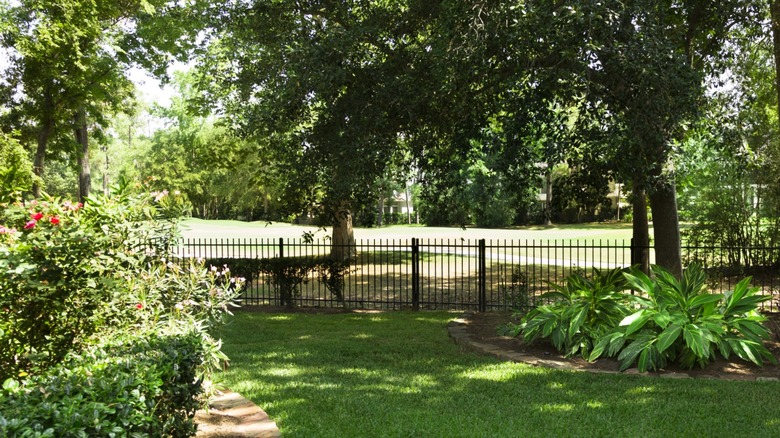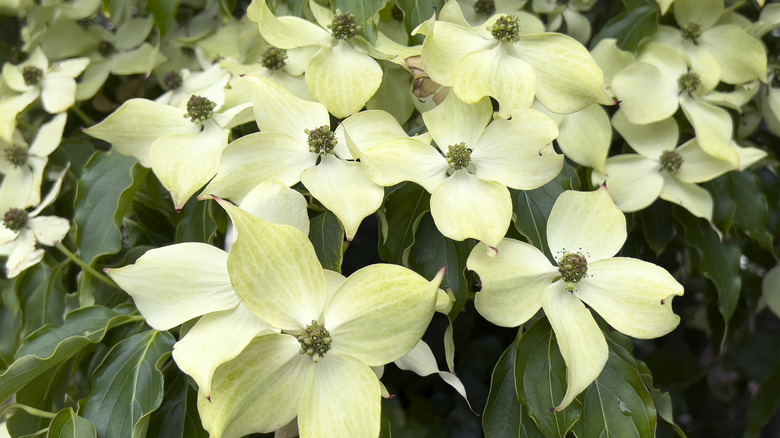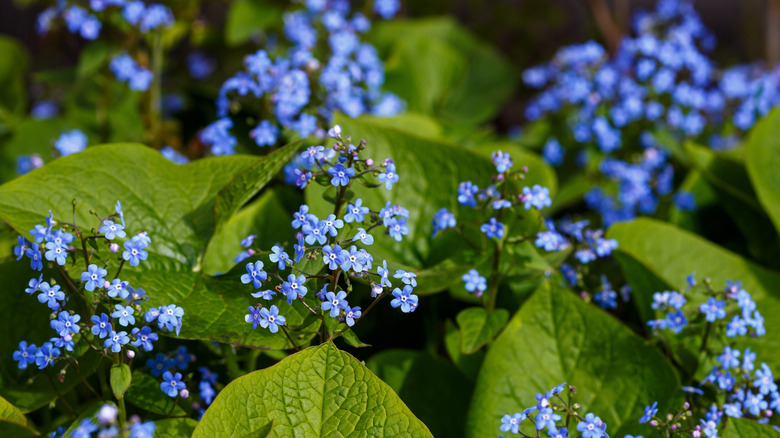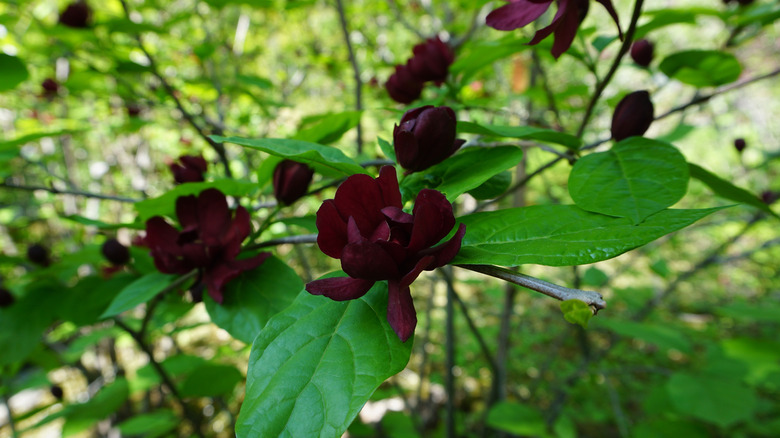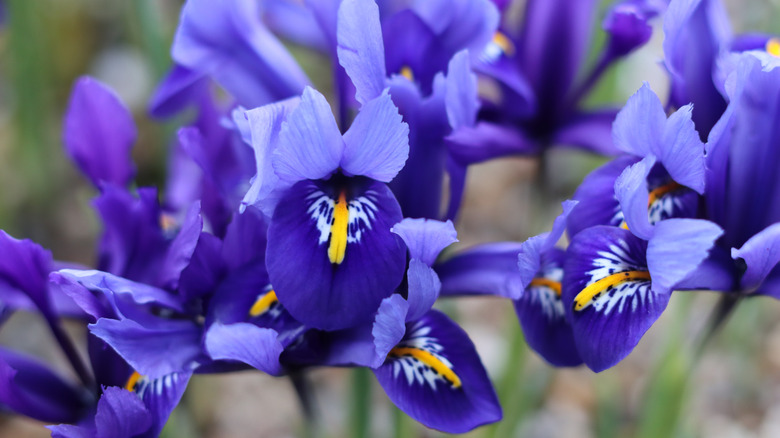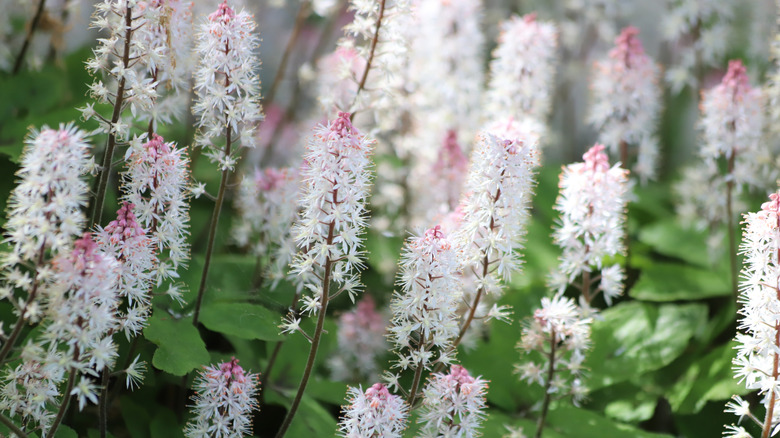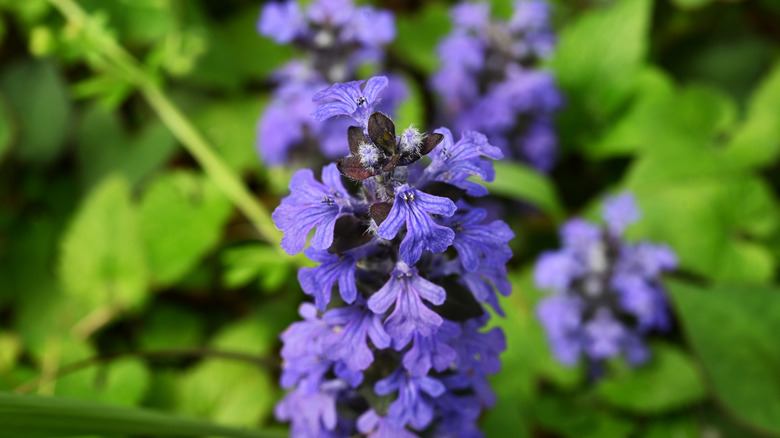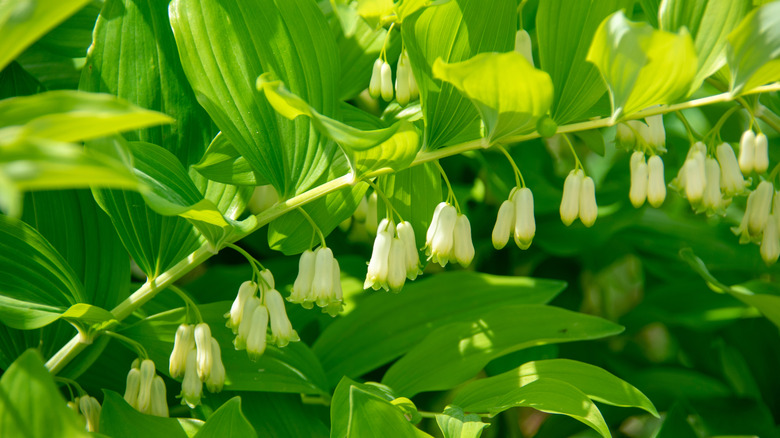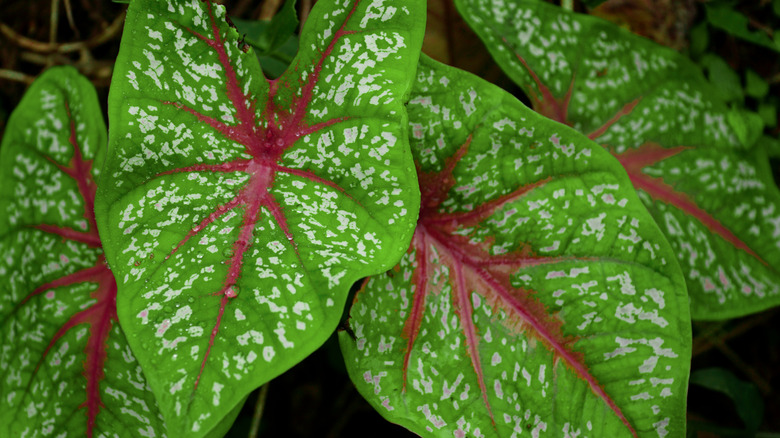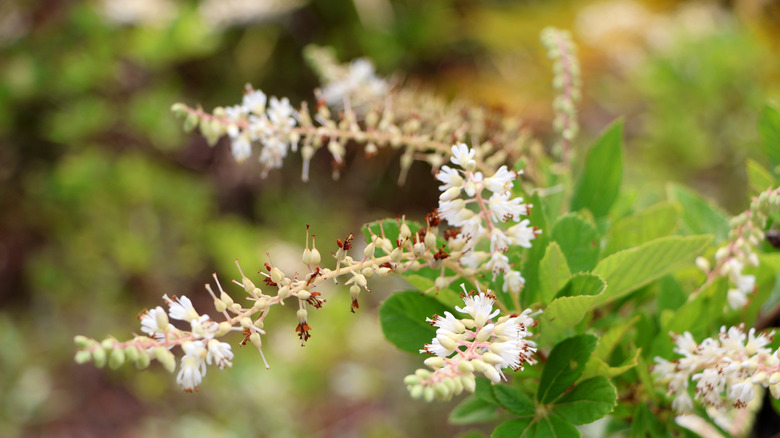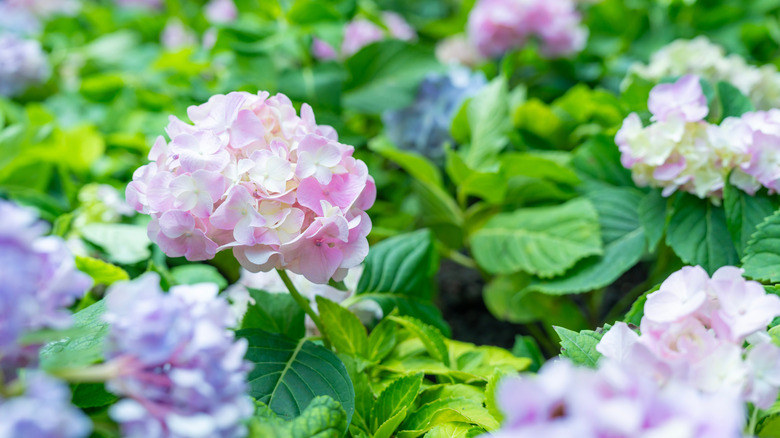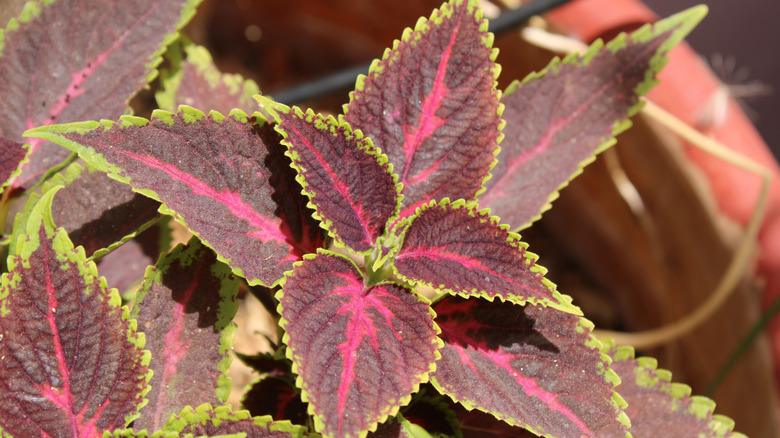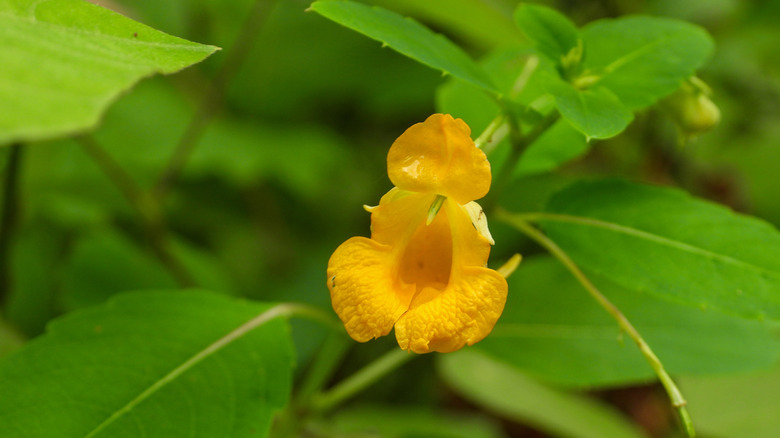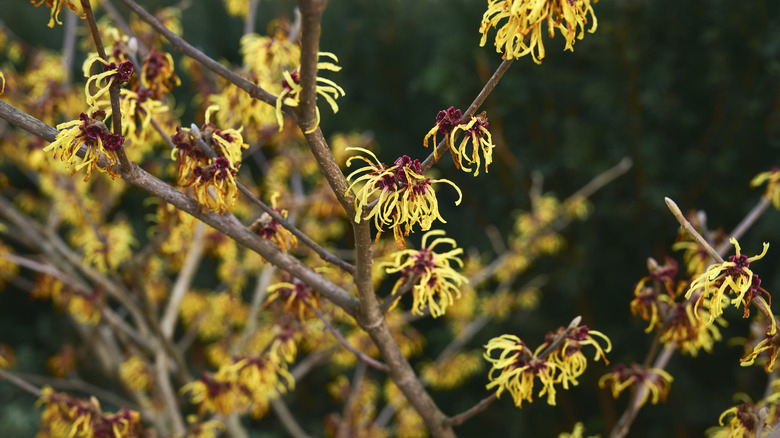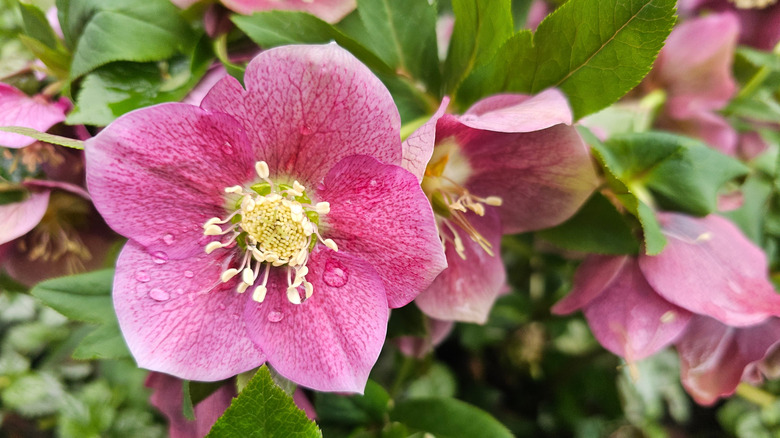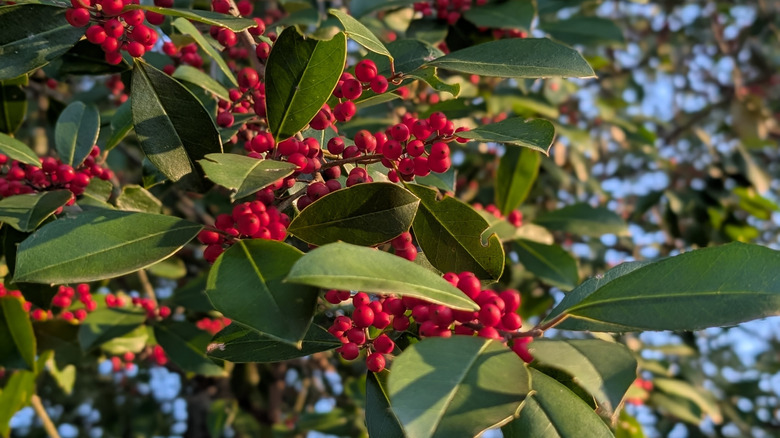The 15 Best Plants To Grow In Partial Shade To Transform Your Yard And Garden
Knowing which plants will thrive where direct sunlight is limited is one of the most important steps in setting your garden up for success. Partial shade is defined as two to four hours of sun per day, and it's more common than many gardeners realize — especially in spaces filtered by tree canopies, fences, or neighboring buildings. Choosing plants adapted to lower light protects them from stress, leaf scorch, and disease while helping gardeners avoid the frustration of poor performance.
Shade gardens create a serene, cooling space filled with subtle light and layered beauty. With the right plant choices, such as plants like Carolina allspice and winter roses, gardens bloom with color through every season; from the fresh growth of spring to richly textured summer foliage and the earthy tones of fall. While trees and taller shrubs contribute to the health of your landscape by cooling the environment, reducing water loss, and providing habitat for wildlife, partial shade zones are an opportunity for creativity, inviting structure, variety, and even habitat-rich planting areas that support biodiversity.
Designing a vibrant garden for partial shade begins with understanding your space — its light, soil, and seasonal patterns. Once those basics are clear, selecting the right plants ensures they will thrive, not just survive.
Kousa dogwood
Kousa dogwood (Cornus kousa) is a four-season focal point for partially shaded gardens. This small, deciduous tree flourishes in well-drained, acidic soil and tolerates moderate shade, especially in the afternoon. It transforms the landscape with layered white bracts that bloom in late spring, followed by raspberry-like fruit in late summer. Foliage turns rich scarlet in fall, and the mottled, exfoliating bark adds winter appeal. As it matures, its upright, vase-shaped form shifts to broad, horizontal branches –creating elegant structure in woodland borders, pollinator gardens, or mixed shrub plantings while resisting pests and drought.
Siberian bugloss
Siberian bugloss (Brunnera macrophylla) is one of the most beautiful shade-loving perennials for ones 3 through 8, with a preference for partial to full shade. Its heart-shaped leaves, often up to 6 inches long, form dense, mounding clumps that add bold texture to shaded borders or woodland gardens. In mid- to late-spring, airy sprays of tiny, intensely blue flowers bloom above the foliage, resembling forget-me-nots. These blooms bring a bright, unexpected pop of color to dim corners. This plant excels in moist, rich, well-drained soils and resists both deer and rabbits thanks to its rough foliage.
Carolina allspice
Carolina allspice (Calycanthus floridus), also known as spicebush, is a shade-tolerant native shrub that thrives in dappled light or partial shade and transforms the garden with its unique form, fragrance, and foliage. Hardy in zones 4 through 9, this deciduous perennial offers deep red, strap-like flowers with a fruity fragrance described as a mix of pineapple, strawberry, and banana. The blooms appear from mid-spring into summer and often rebloom sporadically, especially in warm conditions. In partial shade, the plant grows taller and looser, making it ideal for screening or naturalizing.
Dwarf crested Iris
Dwarf crested iris (Iris cristata) is a low-growing, rhizomatous perennial. As one of the many ground cover plants that love shade, this iris plant is a smart solution for underused garden spaces. Hardy in zones 3 to 9, it spreads gracefully in loamy or sandy soil, even tolerating the dry shade that challenges other plants. Its violet-blue, white, or lavender blooms appear in early spring and feature delicate orange or yellow crests that add texture and color contrast. After flowering, its lush green foliage continues to fill gaps under trees or along shaded borders.
Foamflower
Foamflower (Tiarella cordifolia) transforms shady spaces with delicate frothy blooms and bold, textured foliage. This native perennial thrives in partial to deep shade and grows best in zones 3 through 8. In early spring, narrow spikes of dainty white-to-pink flowers rise above maple-like leaves, attracting pollinators and brightening low-light areas. Foamflower spreads slowly by slender runners, forming soft groundcover ideal for woodland borders or shaded garden beds. Its semi-evergreen foliage brings three-season interest, turning bronze in winter. Grown in moist, well-drained soil rich in organic matter, foamflower offers a low-maintenance solution for underused parts of your garden.
Bugleweed
Bugleweed (Ajuga reptans) transforms shaded spaces into vibrant ground-hugging carpets, especially in zones 3 to 10. This semi-evergreen perennial excels in partial to deep shade, where it forms dense, mat-like rosettes of glossy green, bronze, or purple foliage. In spring and early summer, it sends up six-inch spikes of blue-violet flowers that attract various pollinators. Ideal for covering areas where grass falters, bugleweed suppresses weeds and adds seasonal color. Variegated cultivars offer additional interest, and good air circulation and well-draining soil help prevent crown rot in humid climates.
Soloman's Seal
Solomon's seal (Polygonatum spp.) brings graceful structure and subtle beauty to shaded spaces. This rhizomatous perennial enjoys partial to deep shade, where its arching stems and alternating leaves form an elegant, architectural silhouette. Hardy in USDA zones 3 through 9, it grows best in rich, moist soil with good drainage but also adapts well to dry shade and root competition. In spring, white or yellowish-green bell-shaped flowers nod beneath the stems, followed by blue-black berries that attract birds. Over time, the plant spreads slowly by rhizomes, forming gorgeous woodland colonies.
Angel Wings
Angel Wings (Caladium) gives your garden drama and tropical flair with their vivid, heart-shaped leaves of white, pink, red, rose, and green. Adapted to dappled or partial shade, this annual grows best in moist, well-draining, organic-rich soils and offers dependable color where flowering plants struggle. Fancy-leaved cultivars reach up to 30 inches tall, while compact strap-leaf types suit containers and borders. With thousands of cultivars to choose from, gardeners can find patterns ranging from mottled to veined and striped. In colder zones, tubers can be lifted and stored to replant each spring after frost danger passes.
Summersweet
Summersweet (Clethra alnifolia) brings bold fragrance, late-season blooms, and vibrant wildlife activity to shady gardens where many other flowering shrubs struggle. Native to the eastern U.S., this deciduous shrub grows best in partial shade and damp, acidic soil, making it ideal for woodland borders, rain gardens, or low spots with periodic flooding. Spikes of aromatic white or pink flowers appear in midsummer, drawing native bees, butterflies, and hummingbirds. Unlike most shrubs, summersweet blooms on new wood in shady conditions in zones 3 through 9.
Bigleaf hydrangea
Bigleaf hydrangea (Hydrangea macrophylla) beautifies shady gardens with its lush foliage and bold, long-lasting blooms. This deciduous shrub performs best in dappled light or partial to deep shade, where full sun would otherwise scorch its broad, serrated leaves. Hardy in zones 6 to 11, it adapts to a wide range of soils and tolerates occasional wet conditions. Depending on the species and soil pH, it's possible to learn how to change the color of hydrangeas to produce flowers in shades of pink, blue, purple, or white.
Coleus
Coleus (Coleus scutellarioides) brings a lot of leafy visual interest to shade gardens, and especially enjoys partial shade or dappled light. Grown for its vibrant foliage rather than its blooms, this annual produces ovate to oblong leaves in dazzling combinations of pink, red, burgundy, lime, yellow, and green. If you know how to grow and care for coleus, its dense, showy leaves will stay vivid through summer and fall, adding color and texture to garden beds and containers. Proper drainage and consistent moisture help support healthy, vigorous growth.
Jewelweed
Jewelweed (Impatiens capensis) is a playful plant that any shaded garden space would benefit from. This self-seeding annual thrives in partial to deep shade, especially in moist soils near streams or in woodland gardens. From midsummer to frost, it produces showy, cornucopia-shaped blooms in golden-orange hues marked with reddish-brown spots. Dew and rain bead on the leaves, creating a jewel-like shimmer that gives the plant its name. Jewelweed is considered invasive in some regions, so check with your local extension office to ensure it's safe to plant.
Witch hazel (fall/winter)
Witch hazel (Hamamelis virginiana) grows well in partially shaded spaces while thriving in the cool, moist conditions that many other shrubs resist. Native to eastern North America, this hardy deciduous shrub tolerates clay soil and grows best in USDA zones 3 through 9. Its fragrant, crinkled yellow flowers bloom from late fall into early winter, offering rare color when few other plants dare to flower. Even in part shade, its airy form and golden fall foliage brighten woodland margins, streambanks, and shaded garden borders.
Winter roses
Winter roses, commonly known as hellebores, are a great way to bring early-season color and structure to shady gardens. These perennials are hardy in zones 5 to 8 and grow best in partial shade and well-drained, organically rich soil. Their cup-shaped flowers bloom in pink, white, purple, yellow, or green, and appear in late winter to early spring — often while snow still lingers. Hellebores naturalize slowly and are ideal for low-maintenance, woodland-style borders. Their long-lasting flowers and textured foliage create a sophisticated display that transforms shaded areas.
American holly
American holly (Ilex opaca) is a perennial that is hardy in zones 5 to 9, and can add some seasonal appeal to partially shaded landscapes. This broadleaf evergreen prefers well-drained, acidic soils with dappled light or afternoon shade, making it ideal for woodland edges or privacy screens. Its dense, pyramidal form provides year-round interest, while glossy green, spiny leaves offer texture and depth. For some festive color, female trees show red berries from fall through winter if a male pollinator is nearby. Slow-growing and long-lived, American holly lends a stately presence to any shade-tolerant garden design.
